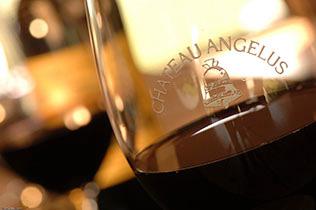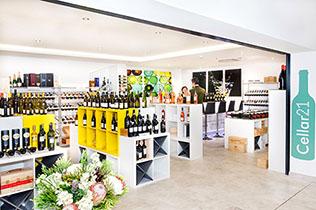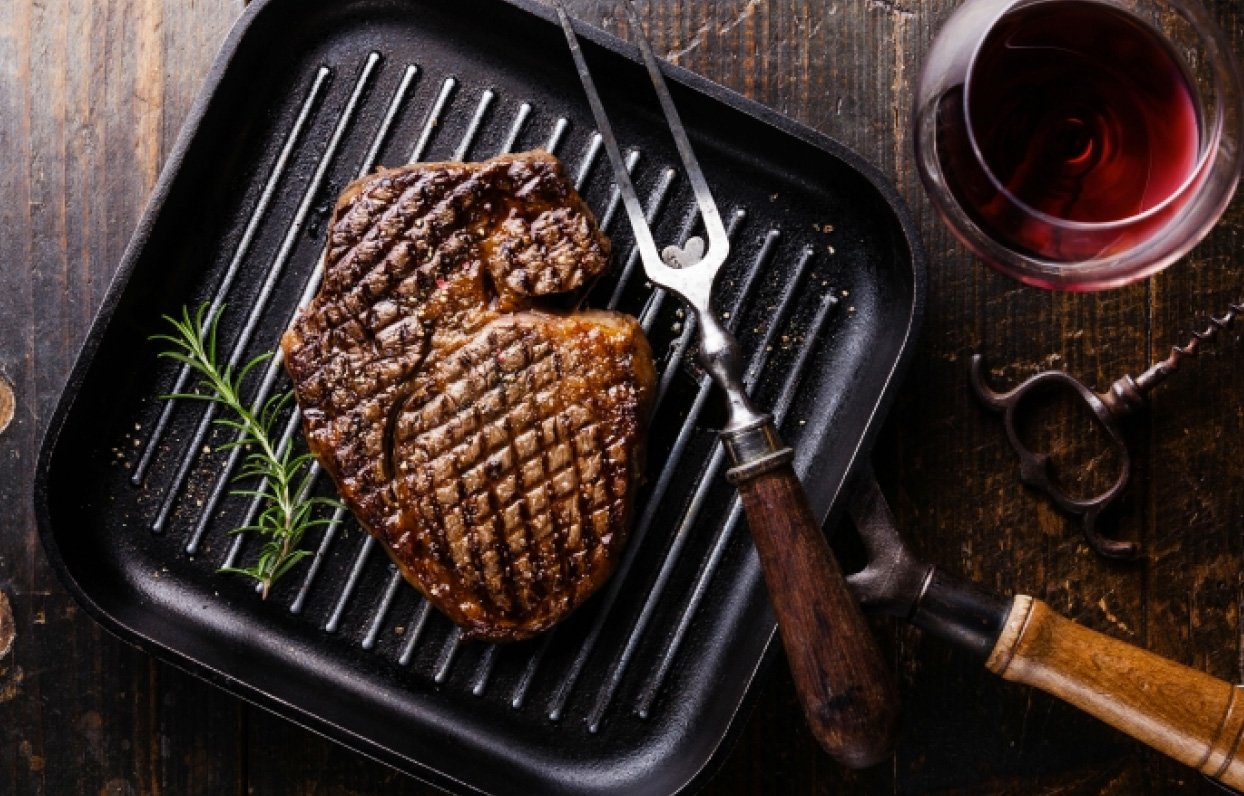

Anthony Symington
UK Brand Manager at Symington Family Estates
"My first memories are of playing with my sisters and cousins in the vineyards and barrel cellars, a particular favourite was hide & seek behind the barrels and every harvest my grandfather would take us out to help pick the grapes (when we were younger I think we ate most of what we picked!)."
An Introduction to Symington Family Estates
Synonymous with the Douro Valley for more than 130 years, the Symington family and the wines of Portugal are inextricably linked. Their generations of commitment to extracting the best out of the land and grapes of the Douro has seen them the most awarded winemaker from the area in the last 25 years. The range of Altano wines, comes from grapes grown in the Vilarica Valley. Its flat topography, deep schist/clay soil and continental microclimate make the perfect conditions for thriving organic viticulture.
Q & A
How did you get started in the wine trade?
I was very fortunate to grow up in the vineyards of the Douro Valley which I believe is one of the most beautiful places in the world, as a result the wine trade is in my blood. My first memories are of playing with my sisters and cousins in the vineyards and barrel cellars, a particular favourite was hide & seek behind the barrels and every harvest my grandfather would take us out to help pick the grapes (when we were younger I think we ate most of what we picked!).
Later on during school holidays I would work at the tourism centre showing visitors around to earn some pocket money, and when I was older in the wineries during the harvest learning about winemaking.
After university I did a brief stint in the City quickly confirming that wasn’t what I wanted to do with my career and that my passion was truly in wine. I worked in the London wine trade for a few years before joining our family business full time, where I am responsible for the UK market working out of our importer John E Fells.
Provide a brief description of the estate’s vineyards...
The Douro Valley is the largest area of mountain vineyard in the world, it is very steep and so almost entirely farmed by hand. We believe it is important to control the whole viticultural cycle to ensure the best quality fruit and are proud to be the largest vineyard farmers in the Douro Valley and also the largest organic farmers in Northern Portugal. All our vineyards that are not organic are farmed under a strict protocol of minimum intervention.
What is your most exciting grape variety?
Touriga Nacional tends to be the cornerstone of our top wines, both Port such as Graham’s Stone Terraces Vintage Port, as well as our still wines such as Chryseia, which was voted the 3rd best wine in the world by The Wine Spectator.
It is a fantastic grape variety providing bold dark fruit flavours with lovely violet aromas and an underlying spiciness and is very resistant to drought. It produces wines with amazing aging potential. It has developed an excellent reputation globally and was even recently legalised for planting in Bordeaux which shows how highly regarded it is for producing top quality wines.
Interestingly, following phylloxera Touriga Nacional was on the verge of extinction, it has very small bunches and is quite low yielding and so was out of fashion with farmers at the time. It was John Smithies of Cockburn’s who was known as the “Cowboy of the Douro” who started replanting it and brought it back to where it is today.
If you could only recommend one of your wines to a customer, which would it be?
This is a hard question… it very much depends on the occasion! Vintage Port is the pinnacle of what we do, and nothing marks a special occasion better than celebrating by opening a mature Vintage Port enjoyed with friends or family. The history and heritage of these wines is second to none. However, on a warm summer’s day or after dinner with friends a chilled glass of Graham’s 20 Year Old Tawny is very hard to beat! I think it has the perfect balance of youth and maturity; it is incredibly fresh but complex at the same time. I am also very proud of our still wines which are increasingly gaining international recognition.
Name you desert island dish and paired wine…
You could go anywhere with this but for me it’s a very easy and simple choice - Chocolate brownie with vanilla ice cream and a chilled glass of Graham’s 1994 Single Harvest Tawny Port.
How do you know when you have a particularly good vintage on your hands?
It is very dependent on the weather conditions of each individual year as this determines the condition of the grapes. If the winter frosts and spring rains have come at the right times we will have a pretty good idea by the start of summer, but August into September is the crucial period which can make or break a vintage. We would like it to be nice and hot but without extreme heat spikes and a day or two of rain at the end of the month to ‘refresh’ the vines followed by clear weather is extremely beneficial. If this all plays out well then we are set for a good vintage. However a lot is down to the skill of the winemaker and making the crucial decisions about what to pick and when. Getting your picking order slightly wrong can affect the whole outcome.
From early August we are conducting regular maturation tests in the vineyards to know to be able to pick at the exact moment the grapes achieve perfect phenolic ripeness. 2017 is a good example where this was achieved much earlier than usual and we had to call everyone back from their holidays on the beaches to start the vintage!
How has climate change impacted your winemaking at SFE?
Climate change has impacted us hugely. The Douro Valley is already one of the driest wine producing regions in the world and we have seen a steady trend over the past few decades of lower rainfall and higher temperatures. We are now averaging 1.3 °C more than 30 years ago. We have to work very hard to mitigate the effects of climate change. One of the things we have been doing is researching different grape varieties in our 3 vine experimentation libraries. This has shown us two exciting grape varieties Alicante Bouchet and Sousao which are particularly drought resistant and bring good levels of acidity in extremely hot years when other varieties can lack acidity.
In the world of wine who do you most admire, and why?
My grandfather, Michael and his cousins Ian and James. When they returned to the family company after serving in the British army in WWII they inherited a business with the world in turmoil. The war had decimated global trade, being a mainly exporting company this was seriously problematic. Additionally, rationing in the UK which was their main market continued for a number of years which further accentuated the problems. However rather than winding up the business which some felt was inevitable they managed to turn things around and in 1970 bought Graham’s Port turning Symington Family Estates into what it is today.
They worked across every area from winemaking being in the vineyards rain or shine, to sales traveling to export markets to meet customers. They showed the true value of hard work and determination.
What are your thoughts on Port’s perception in today’s fine wine market?
Port’s stature in the fine wine market is growing, smaller high quality recent vintage releases have definitely helped this. Liv-ex recently established a Port Index which is a great endorsement of the potential they feel Port has in this area. Our last two full declarations 2016 and 2017 were the most successful in history selling out globally within 6 weeks of release.
Some of our Ports have performed extremely well. Dow's 2011 Vintage Port was trading on the secondary market (Liv Ex) at £450.00 per case in 2013 (declaration year) and is now at £1,500 per case and has been at this level since 2014. People who bought this great Port have more than tripled their money! I do not suggest that people buy our Port for an investment but these auction and trading prices are the ultimate indicator of reputation and quality. Our Graham's 2011 has increased by 38% and Warre's 2011 by 78%. These are remarkable figures by any standard.
I firmly believe that there is an excellent future for all our premium Ports, with particular growth coming from great Tawny Ports such as our Graham's 20 Year Old and from outstanding Vintage Ports. All the data show that this is not just my wishful thinking, it is happening.




